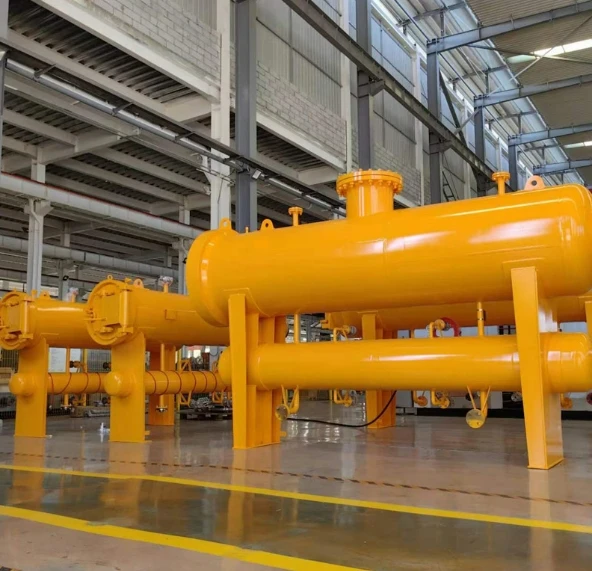
Dec . 18, 2024 03:18
Back to list
gas filtration
Gas Filtration An Essential Process for Air Quality Management
Gas filtration is a critical process in various industries, aimed at controlling air quality and minimizing the release of harmful substances into the atmosphere. With the increasing awareness of environmental issues and the strict regulations imposed on industrial emissions, the importance of effective gas filtration systems cannot be overstated. This article explores the mechanisms, types, and significance of gas filtration in contemporary settings.
Understanding Gas Filtration
Gas filtration is the process through which gaseous pollutants are removed from exhaust streams before they enter the atmosphere. This is achieved using various filtration technologies that capture particles, aerosols, and gas-phase contaminants. The primary goal is to reduce the concentration of harmful substances, including volatile organic compounds (VOCs), heavy metals, and particulate matter (PM). By employing gas filtration systems, industries can contribute to cleaner air and mitigate the negative impacts of pollution on human health and the environment.
Mechanisms of Gas Filtration
The gas filtration process typically involves several mechanisms that work in conjunction to effectively trap pollutants. These mechanisms include
1. Physical Filtration This method relies on the size difference between the particles and the apertures within the filter medium. As the gas passes through the filter, larger particles are physically blocked, while smaller particles may pass through but can be captured by other means.
2. Chemical Absorption This process occurs when gas molecules chemically react with the filter medium, often resulting in a change in the state of the gases absorbed. For instance, activated carbon is commonly used to adsorb VOCs and other gaseous pollutants.
3. Electrostatic Precipitation In this method, charged particles are attracted to oppositely charged plates, effectively removing contaminants from the gas stream. This technique is particularly useful in capturing particulate matter from industrial emissions.
4. Biofiltration This innovative approach utilizes biological organisms, such as bacteria or fungi, to degrade pollutants in the gas stream. Biofilters are effective for certain VOCs and provide an environmentally friendly alternative to traditional filtration methods.
Types of Gas Filtration Systems
gas filtration

Gas filtration systems can be categorized based on their operational mechanisms and applications. Some common types include
- High-Efficiency Particulate Air (HEPA) Filters These filters are capable of capturing at least 99.97% of particles that are 0.3 microns or larger, making them essential in environments that require stringent air quality standards, such as hospitals and laboratories.
- Activated Carbon Filters Known for their exceptional gas adsorption capabilities, these filters are widely used in industries for VOC removal, odor control, and air purification.
- Wet Scrubbers These systems utilize a liquid to capture and remove particulates and gases from the air. They are highly effective in industries dealing with corrosive gases and high moisture content.
- Electrostatic Precipitators (ESPs) Often used in power plants and industrial processes, ESPs are efficient at removing fine particles from exhaust streams, considerably reducing the emission of particulate matter.
Significance of Gas Filtration
The significance of gas filtration extends beyond regulatory compliance. Implementing effective gas filtration systems significantly enhances public health by reducing exposure to harmful pollutants, thereby decreasing the risk of respiratory diseases and other health issues. Additionally, proper gas filtration can help industries reduce their environmental footprint and improve operational efficiency by minimizing the release of toxic substances.
Moreover, as technology continues to evolve, gas filtration systems are becoming increasingly sophisticated, integrating advanced monitoring systems that allow for real-time tracking of air quality. This proactive approach not only helps in maintaining compliance but also fosters a culture of environmental responsibility within organizations.
Conclusion
Gas filtration is an essential component of contemporary industrial practices, crucial for protecting both public health and the environment. By understanding the mechanisms, types, and importance of gas filtration, industries can enhance their sustainability efforts while contributing to cleaner air and a healthier planet. As regulations continue to tighten, the adoption of advanced gas filtration technologies will play a pivotal role in achieving a balance between industrial growth and environmental stewardship.
Latest news
-
Safety Valve Spring-Loaded Design Overpressure ProtectionNewsJul.25,2025
-
Precision Voltage Regulator AC5 Accuracy Grade PerformanceNewsJul.25,2025
-
Natural Gas Pressure Regulating Skid Industrial Pipeline ApplicationsNewsJul.25,2025
-
Natural Gas Filter Stainless Steel Mesh Element DesignNewsJul.25,2025
-
Gas Pressure Regulator Valve Direct-Acting Spring-Loaded DesignNewsJul.25,2025
-
Decompression Equipment Multi-Stage Heat Exchange System DesignNewsJul.25,2025

